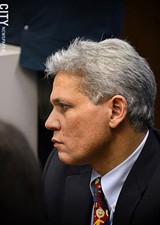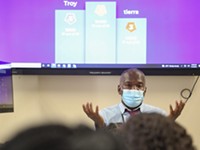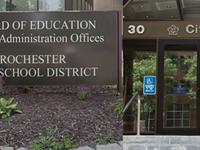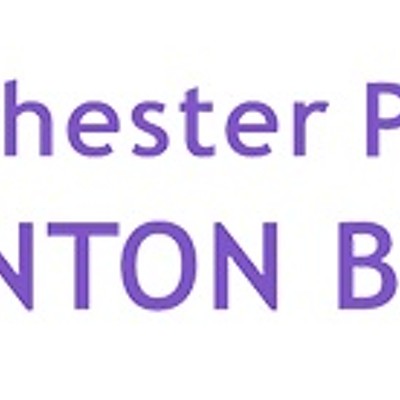[
{
"name": "500x250 Ad",
"insertPoint": "5",
"component": "15667920",
"parentWrapperClass": "",
"requiredCountToDisplay": "1"
}
]
It's tempting to think that the pending shakeup at East High School is just the State Education Department doing its job: pushing for greater accountability. But the situation at East mirrors the serious problems permeating much of the Rochester school district. And a plan for improving the district as a whole instead of just focusing on individual schools seems more imperative than ever.
The SED has given district officials roughly a month to come up with a plan to fix the chronically under-performing high school. The district's options are: convert East to a charter school; hand it over to the State University of New York; partner with an outside organization, possibly a university; close the school and relocate the students; or close the school and open an entirely new school on the site.
At a press conference last week, Rochester schools Superintendent Bolgen Vargas said that all options have to be considered, but that he doesn't want to close East High. And he has been critical of another SED option for improving failing schools, the phase-out, phase-in model.
Vargas said the school's crisis was predictable. There's no way that East's graduation rate could hit even 50 percent, he said, when only 80 percent of its students attend on any given day.
It's hard not to empathize with Anibal Soler, principal of East High. At the press conference, Soler said he knew improving East was going to be a heavy lift when he took the job. And his professional evaluation has been adversely impacted by the problems at the school, he said. It's quite a reversal of fortune; not long ago, Soler was considered one of the district's rising stars.
It won't be surprising if district officials choose a plan that involves partnering East with another organization, such as a university. Vargas has already indicated that he wants area colleges to take over the management of some city schools.
But before a plan can be submitted to the SED, district officials, school board members, parents, teachers, and community leaders must agree on the approach. Given the district's history, it's hard to be optimistic about that. But we may know what to expect if they can't work together in this case. A mix of politics, special interests, warring factions, and personal agendas led the SED to take extreme measures with two of Buffalo's schools. The SED moved management of those schools to an outside entity.
Vargas said he doesn't know if the SED is looking at any other city schools. But considering that many of the district's schools are priority schools — those the state says need dramatic improvement — don't be shocked if the state demands changes at more city schools.
The big question about East is what, realistically, can the district do? It's difficult to find certifiable success stories from the district's past attempts to fix broken schools. (This is the second time East has come on the SED's radar.) How much more funding will go toward rearranging the desks? What have school officials learned after years of trying to improve East? No one seemed able to articulate that during last week's press conference.
And if East's students are so far behind before they even set foot in the door — based on graduation rates and test scores — we have to ask ourselves if it's even possible to resuscitate the school.
East's problems reflect a much larger, systemic issues. Recently, audits of the $1.2 billion schools modernization project revealed cost overruns and delays, and a damning report surfaced about the efforts to improve Monroe High School. And the district's struggles with attendance and student behavior continue. A teacher who asked to remain anonymous says that student misconduct in many of the district's secondary classrooms borders on chronic mayhem. And she's not alone in this observation.
Last week, Vargas gave a presentation he called an action plan for improving student achievement. Though there was little new in it, much of what Vargas presented seemed pragmatic enough: improving attendance, getting all students to read proficiently by third grade, providing more instruction time, and providing students with some of the extracurricular activities more readily found in suburban schools.
Though strong on what needs to be done to positively impact student outcomes, the presentation was weak on how to get it done. There were few of even the most incremental timelines. And confusion continues about how to implement the Common Core curriculum.
Vargas said he has the budget and resources to improve the district, including schools such as East. He said it's a matter of making the right choices and being clear about budget priorities. But it's much more than that.
It's abundantly clear that the district suffers from interminable management problems, and an inability to successfully complete even the most basic tasks and policies. And now well into his term, Vargas is causing some people to worry that his plan, whatever it is, isn't working.
Speaking of...
Latest in News
More by Tim Louis Macaluso
-

RCSD financial crisis builds
Sep 23, 2019 -
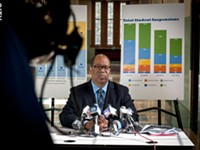
RCSD facing spending concerns
Sep 20, 2019 -

Education forum tomorrow night for downtown residents
Sep 17, 2019 - More »
